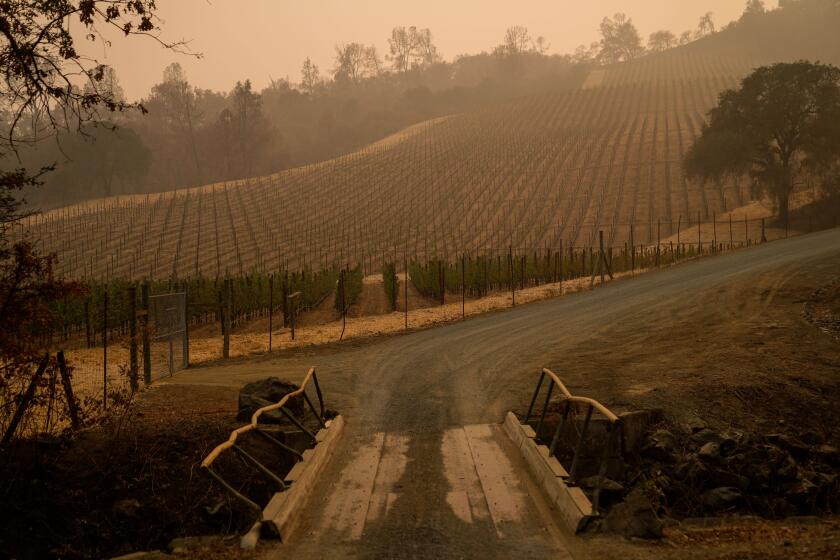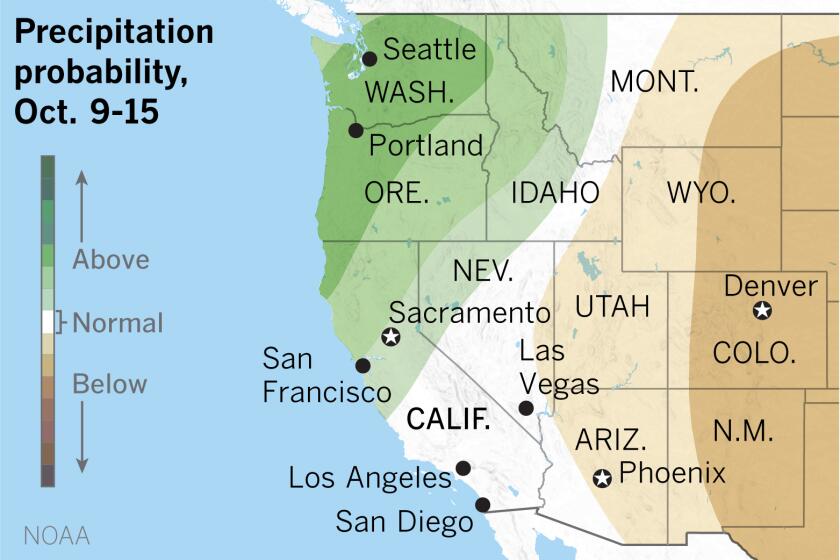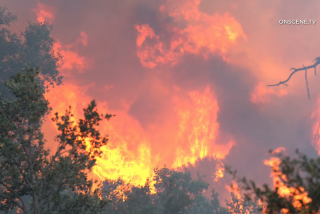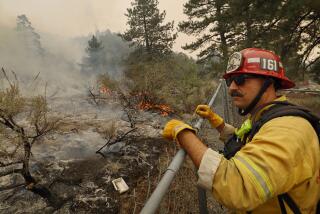August Complex fire burns record-breaking 1 million acres
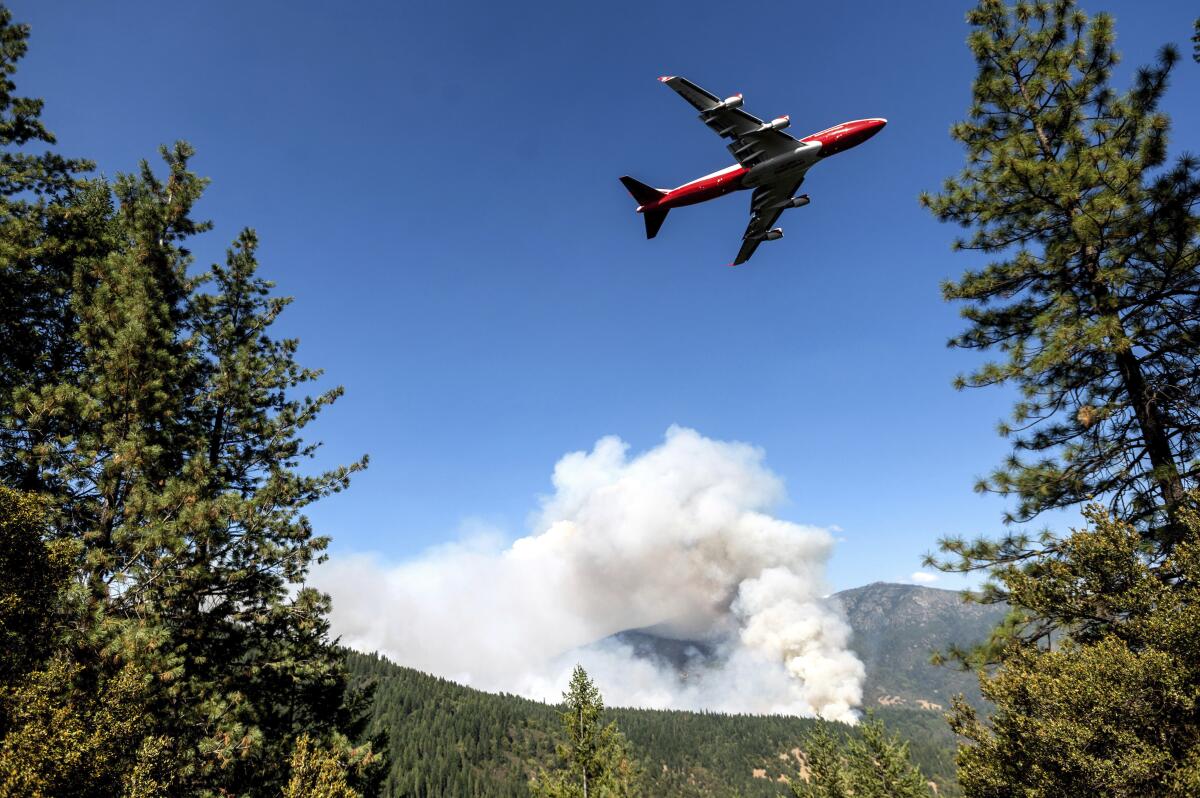
In an already unprecedented fire year, another record has been shattered: The August Complex fire has burned 1 million acres, the first wildfire in California history to have destroyed such a vast swath of land.
The Northern California blaze, which began as a series of smaller lightning-sparked fires in the Mendocino National Forest, quickly morphed into a “mega-fire” burning across portions of Mendocino, Humboldt, Trinity, Tehama, Glenn, Lake and Colusa counties. As of Monday morning, it was 54% contained.
The priority for the week will remain on the northeastern area of the blaze, which is still displaying “active fire behavior,” according to Christine McMorrow, a spokeswoman for the California Department of Forestry and Fire Protection. The northwest zone, which is close to communities, is also an area of grave concern.
At least 3,900 personnel have been assigned to the August Complex, including aerial and ground crews from Cal Fire and the U.S. Forest Service, as well as 138 National Guard personnel and crews from as far as Montana, Texas, Washington and New Jersey.
“Everybody’s ready for a break, but everybody’s doing what they have to do,” McMorrow said of the beleaguered fire crews. “I think everybody across the state is ready for a break in the pattern that we’ve had for almost two months now.”
The August Complex’s million-acre milestone arrives as California shatters yet another wildfire record of 4 million acres burned statewide — more than double the previous record.
At least 31 people have died in the fires and 8,200 structures have been destroyed. Tens of thousands of people have been displaced as evacuation orders remain in effect in several counties.
“Our top priority is firefighter and public safety,” U.S. Forest Service spokeswoman Kate White said Monday. “It’s been hard for the communities who have had to go through this. We want to make sure we’re doing what we can and providing the support we can.”
A dome of smoke, haze and ash from the wildfires is lingering over much of the state. Winemakers in Sonoma and Napa Valley, where the Glass fire has burned through 65,000 acres, have said the effects are so bad that many vineyards won’t be producing a 2020 vintage.
“All of them are tainted,” one vintner said of his grapes. “You can taste it on the finish.”
Smoke from California wildfires has ruined the 2020 vintage for some wineries
In Southern California, the Bobcat fire is also producing a substantial amount of smoke. Officials with the U.S. Forest Service said the haze is coming from an active fire around Mt. Wilson but noted that it is under control and burning within containment lines.
“The public has been really understanding, but they are rightfully concerned when they see a plume like that,” U.S. Forest Service spokesman Jim Innes said Monday. “Just hang in there for a couple more days.”
The Bobcat fire ignited Sept. 6 inside the Angeles National Forest and has burned through more than 115,000 acres. As of Monday, it was 88% contained, but smoke from the blaze is still contributing to poor air quality in the region. The South Coast Air Quality Management District said air quality could be unhealthy for sensitive groups Monday.
Record hot, dry conditions have contributed to conflagrations throughout the state. In Northern California, more seasonal temperatures and increased chances of rain are expected to arrive later in the week, which officials said could bring some relief.
Remnants of Marie could interact with a dip in the jet stream to bring rain to California.
“We’re hoping that the weather in is in our favor and helps put a damper on some of the areas that are seeing active fire behavior,” McMorrow said.
But weather is only a part of the battle, as rocky terrain in several of the burn zones has also slowed firefighting efforts.
“A lot of these fires are burning in pretty rough and rugged terrain, so we actually can’t get a [containment] line around them,” McMorrow said. “Some of these fires are going to be at 95% containment until it rains.”
Control over the Bobcat fire has allowed the Forest Service to release personnel from that blaze and reassign them to fires farther north.
The relief can’t come soon enough, McMorrow said, as the estimated containment date for the August Complex — which is currently listed at Wednesday — is almost certain to change.
“We are in the peak of a historic fire season, so we still have a lot left to go,” she said. “Just based on what I’m seeing, I would expect that full containment is going to be pushed out.”
California wildfires map
More to Read
Sign up for Essential California
The most important California stories and recommendations in your inbox every morning.
You may occasionally receive promotional content from the Los Angeles Times.
